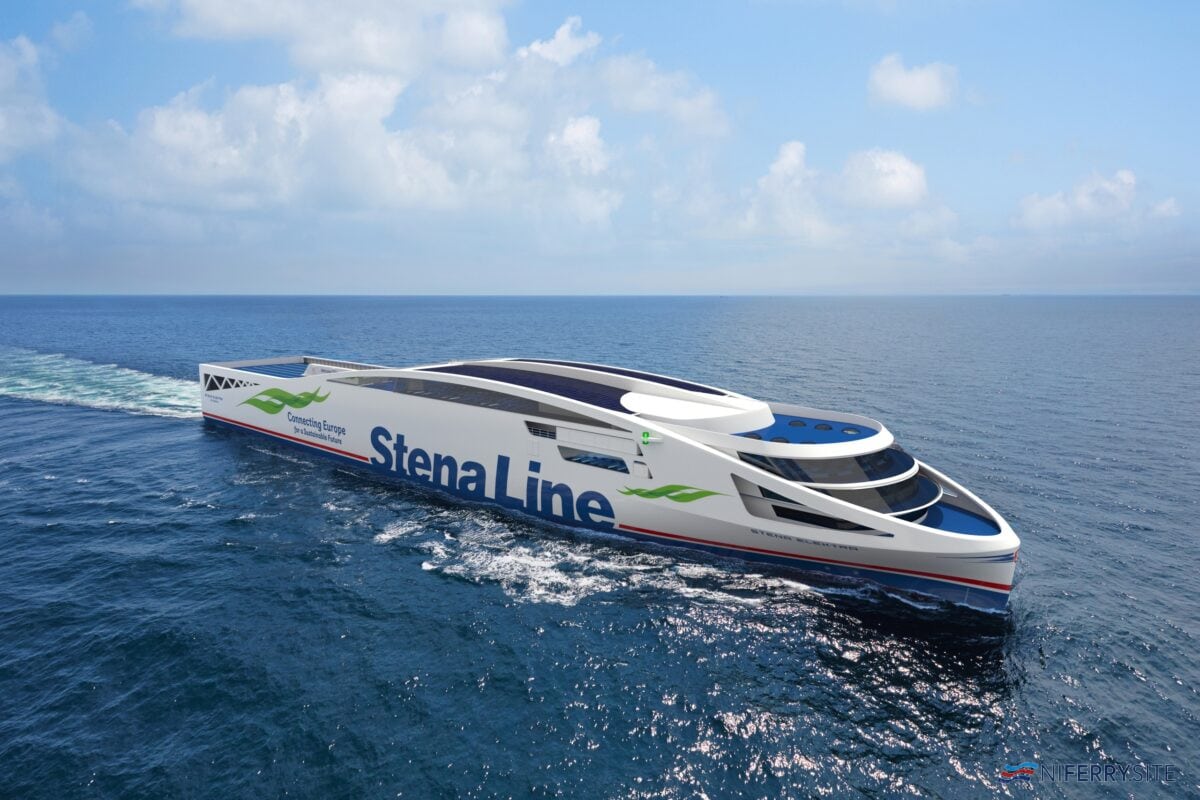Two Stena Elektra vessels to be delivered by 2030
Ferry company Stena Line, the Port of Frederikshavn, and Frederikshavn Municipality signed an agreement earlier today committing each of the parties to making the necessary investments for Stena Line to introduce two Stena Elektra class ferries to the Gothenburg-Frederikshavn route by 2030. The agreement will mean that onshore infrastructure such as sustainable charging facilities will be developed in parallel with the vessels.
Stena’s Elektra ferries will be the world’s first fossil free Ro-Pax vessels of their size. Measuring approximately 200 metres long, the ships will have capacity for 1,000 – 1,500 passengers and 3,000 lane metres of vehicles. That’s a similar amount to Stena Line’s current generation of diesel-powered Stena E-Flexer ferries.

The arrival of the Elektra ferries, which Stena has previously said it intends to order by 2025, will likely see off the current vessels on the route – STENA DANICA and STENA JUTLANDICA. The latter already runs partially on batteries, reducing emissions by around 1,500 tonnes of CO2 per year, equivalent to the annual emissions of 600 passenger cars.

Stena has been developing the Elektra concept for some years now, working with partners such as RISE Research Institutes of Sweden and Chalmers University of Technology. A recent report compiled with assistance from Stena and others involved in the project for the Swedish Transport Administration concluded that a fully electric Ro-Pax ferry operating on the Gothenburg – Frederikshavn “is a technically and commercially realistic alternative”. It also concludes that a fully electric vessel is likely to cost 20% more to purchase than a similar conventional vessel.

Largest ever marine battery installation
While exact specifications for the Stena Elektra ferries have not yet been finalised, it is expected that they will be equipped with a battery capacity of 60-70 MW. That is at least 10 times the current largest marine battery installation. About half of this capacity should be sufficient for the three-hour crossing meaning that battery life and charging time can be optimised. This also means that there should always be sufficient battery capacity to return to the port of origin should there be issues at the destination. Charging will be via a high voltage shore cable and will take place over one hour during turnaround.

The ship will be constructed from high tensile steel and designed to be lightweight to maximise efficiency and minimise power consumption. A new hull form has also been developed specifically for the project which is optimised for the Gothenburg – Frederikshavn route. Propulsion is expected to be provided by Azipods which take up less space than a conventional drive chain and eliminate the need for bow thrusters for manoeuvring the vessel.
Stena Line’s CEO Niclas Mårtensson, who is also a member of the Swedish Government’s Commission for Electrification said:
“Our ambition is to lead the development towards fossil fuel free shipping and sustainable transport at sea. That is why we are investing in new technologies and various alternative fuels. We are already ten years ahead of the international shipping industry’s target for reducing carbon dioxide emissions, but with Stena Elektra we are taking another big step on Stena Line’s sustainable journey, on the road to a completely fossil fuel free operation,”

The Frederikshavn Municipality is also committed to participating in the creation of a sustainable connection between Sweden and Denmark with the two Stena Elektra vessels.
“Stena Elektra is a fantastic project for Frederikshavn. We know from experience that when the municipality leads the way, the business community as well as private individuals follow in our green footsteps. Our town and Stena Line have had a close relationship for a long time, but this ambitious agreement is not only important for us – it also has ripple effects throughout Denmark,” says Birgit Hansen, chairman of the municipal council (S) of Frederikshavn Municipality.
